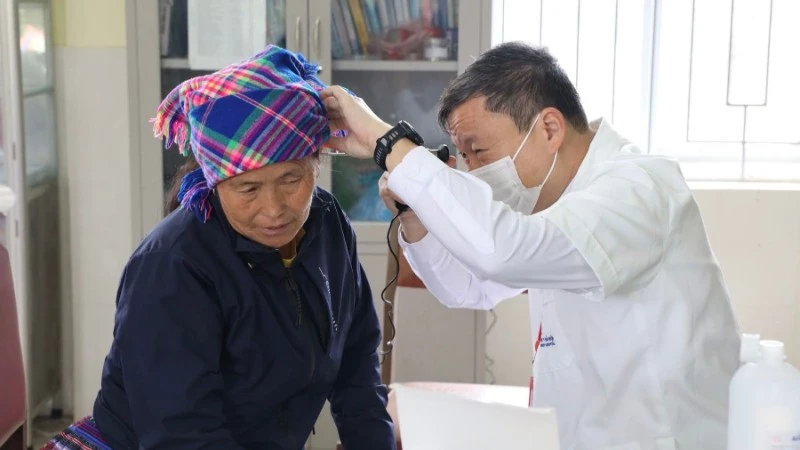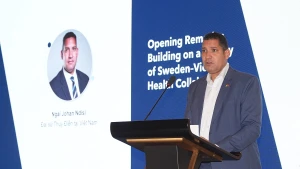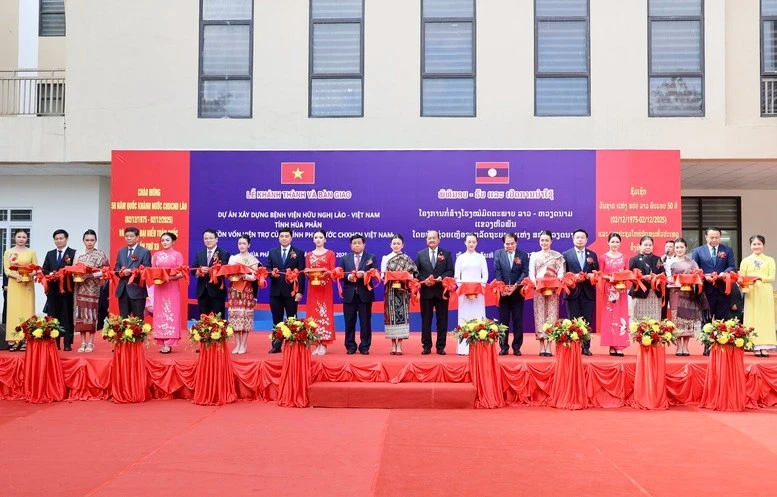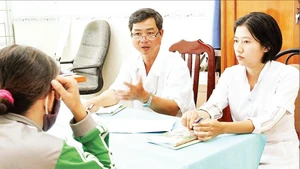However, with a population of over 100 million people, the demand for healthcare has been increasing and diversifying, requiring the system of medical examination and treatment facilities to continue to make additional efforts.
Prof. Dr Tran Van Thuan, Deputy Minister of Health, said that in the context of rapid social development and increasing demand for medical services, patient-centred care is the consistent goal of the new Law on Medical Examination and Treatment, which took effect from January 1, 2024. The health sector has implemented many important solutions to improve the quality of medical examination and treatment.
Infrastructure is an important foundation for providing medical services. In the current reality, upgrading and expanding hospitals and medical facilities is necessary to ensure modern and convenient facilities for patients.
In recent years, many hospitals have been newly built or renovated with advanced medical equipment, to serve more effective diagnosis and treatment. Notably, public hospitals, non-public hospitals and grassroots medical facilities have invested heavily in infrastructure, from outpatient clinics and inpatient treatment areas to high-level specialised areas.
Modern medical equipment such as CT and MRI machines, endoscopy systems and international standard operating rooms have been put into use, helping to improve the ability to diagnose and treat complex diseases.
Along with the investment in infrastructure, the health sector has also focused on improving the quality of human resources. Humans are identified as the decisive factor in all activities in the health sector, so enhancing training and professional improvement for doctors and physicians is one of the most important solutions to improve the quality of health services.
Continuous training programmes, specialised training and encouragement of studying and working abroad have been implemented. Leading medical universities such as the Hanoi Medical University and the Ho Chi Minh City University of Medicine and Pharmacy have cooperated with international medical facilities to introduce advanced training programmes. This has not only helped doctors and physicians master modern medical techniques but also improved communication skills and care for patients.
In recent years, the healthcare industry has strongly applied information technology, such as building and developing an electronic health record system, to help manage the patients’ information effectively, reduce errors and save time.
In addition, the Hospital Information System (HIS), the picture archiving and communication system (PACS), and the laboratory information system (LIS) have been widely applied, optimising the workflow. These systems allow doctors and medical staff to quickly and accurately access the patients’ information, thereby making more effective treatment decisions.
In addition, the use of mobile applications and online platforms has also helped people easily access medical information, make appointments and receive online test results.
To reduce the burden on central hospitals and support patients in remote areas, telemedicine services have been widely deployed to help patients easily access high-quality medical services, without travelling to higher-level hospitals.
The application of online appointment booking systems, cashless payments, and the provision of medical consultation services via telephone, helps patients save time and effort.
To ensure the quality of medical services, it is necessary to implement high-quality standards and procedures, not only in Vietnam but also abroad.
According to the new Law on Medical Examination and Treatment, quality standards in medical examination and treatment are regulated in four types, including basic quality standards, advanced quality standards, specialised quality standards and technical quality standards, under the assessment of management agencies, and domestic and international independent quality certification organisations, towards improving the quality and safety in medical examination and treatment.
Hospitals and medical facilities will have to operate a comprehensive quality management system, from patient admission, diagnosis, and treatment, to post-treatment monitoring. In addition, periodic and unscheduled quality inspections and assessments have been conducted, to promptly detect and correct problems. Maintaining high-quality criteria and standards, not only helps improve service quality but also creates trust for patients.
In recent years, the achievements of scientific research development, the application of new technologies and enhanced international cooperation have brought about great results, in which medical research is the foundation for the development of the health sector.
Therefore, hospitals must promote scientific research activities in the health sector, from basic to applied and clinical research. The strengthening of international cooperation and the mobilisation of resources from organisations and enterprises are also important factors.
New technologies such as artificial intelligence (AI), biotechnology and biomedical engineering are opening up many breakthrough opportunities in healthcare. The application of these technologies helps improve the quality of disease diagnosis, treatment and management while reducing costs and increasing the efficiency of the healthcare system.
Communication and education on public health is an indispensable part of improving healthcare quality. Therefore, medical facilities need to organise more programmes to propagate and educate about disease prevention, while raising public awareness of healthcare to promote disease prevention and proactive healthcare behaviours.
In addition to health education programmes, the specialised units should organise seminars or community events to provide people with knowledge about disease prevention and management.
These activities need to be tailored to each group of people, especially those at high risk or disadvantaged populations, not only helping people better understand disease prevention measures and early detection of diseases but also encouraging them to participate in screening activities and regular health check-ups.
















